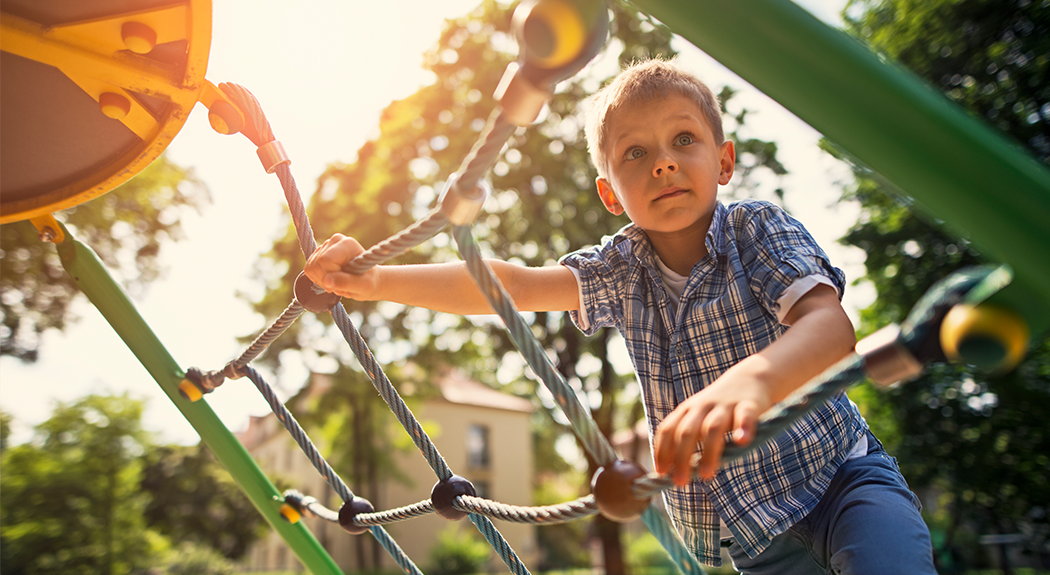Now that warmer weather is here, hitting the playground with your child may be top on your list of fun activities. Before you do, read our tips on how to prevent falls and other injuries on the playground.
Check playground surfaces
It’s easy for injuries to occur on playgrounds. Make sure the surface of the playground is soft. Some examples are surfaces that are matted or filled with wood chips or sand. These surfaces will lessen the severity of cuts and bruises that may occur during play.
Supervise during play
A playground is a very exciting place for your child. They may want to explore every piece of equipment in their path. Let them explore; just make sure they are using age-appropriate equipment. Avoid playground equipment that is too high for their size or that they are not familiar with using.
Carefully monitor children when they use monkey bars, swings and climbing equipment. A fall from one of these can lead to a concussion. Every day, medical staff treat approximately 8,000 children in U.S. emergency rooms for fall-related injuries, according to the Centers for Disease Control and Prevention.
Limit sun exposure during peak hours
Try to avoid going to unshaded playgrounds at peak-sun exposure hours, 10 am to 2 pm. This will prevent heat-related illnesses and skin burns due to hot playground equipment. Instead, find a shaded playground or go to the playground outside of peak hours. Staying in the shade and wearing sunscreen, hats and sunglasses can all help provide some sun protection. On warm days, make sure you have drinking water available for your child.
Lookout for hazards
Keep your eye out for rusted or broken equipment and dangerous surfaces on playgrounds. They can cause cuts if children accidentally run into them. Also, tree stumps and uneven surfaces can be trip hazards.
Practice sliding board safety
Traveling down the slide with a toddler on your lap may cause a leg fracture. This usually occurs if the child’s foot gets stuck on the surface of the slide as you slide together. Consider letting your child slide alone or making sure their feet don’t touch the slide if you go down together.




